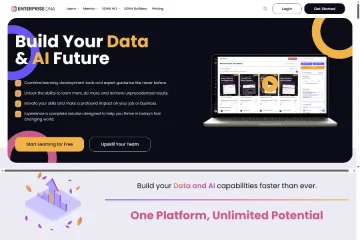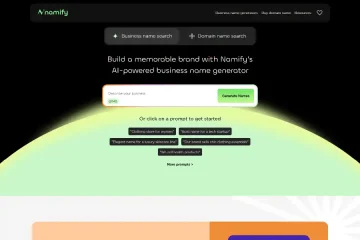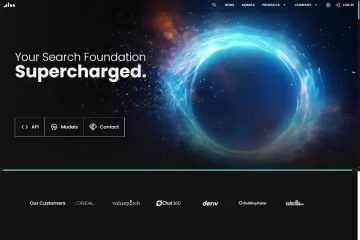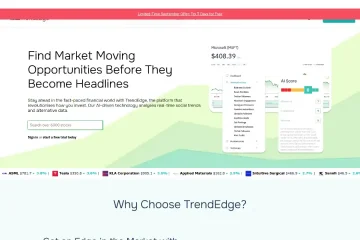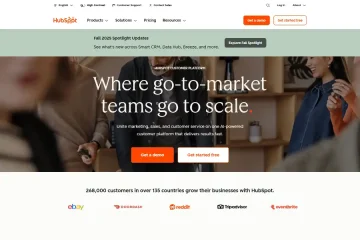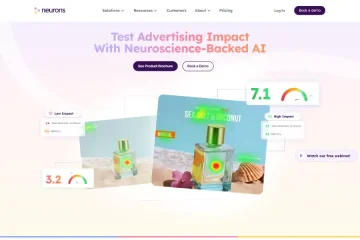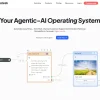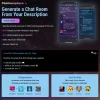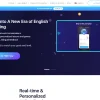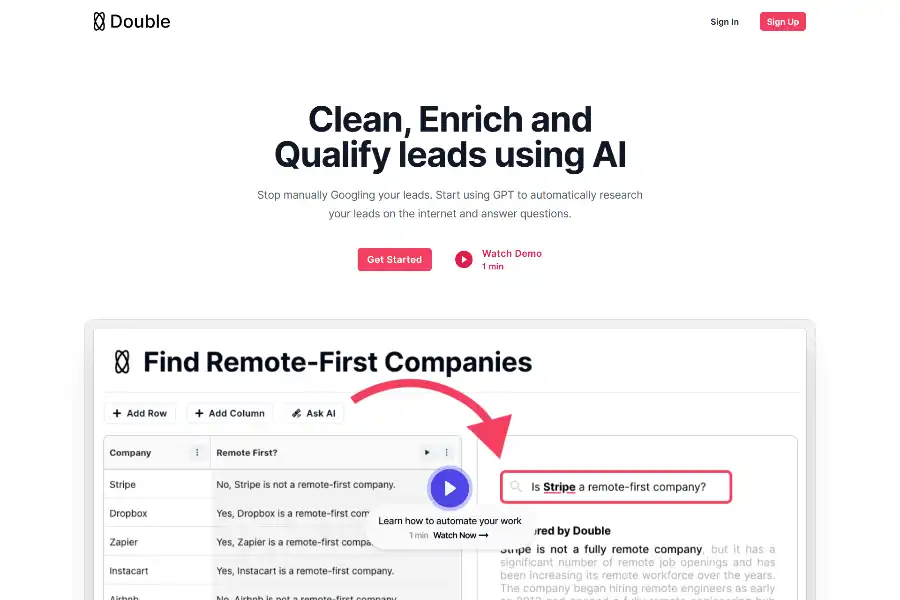
Double: AI-Powered Prospecting and Hyper-Targeted Outreach Unpacked
Introduction: Why Double is Reshaping B2B Lead Generation
In 2025, sales and growth teams no longer struggle with a shortage of data—they drown in it. The real challenge is turning raw lists of companies and contacts into precisely segmented, high-intent audiences that convert at scale. Double, a Y Combinator–backed AI prospecting platform, positions itself as the antidote to this modern paradox. By synthesizing web-scale research, verified contact discovery, and generative message personalization in a single workflow, Double promises to cut hours of manual research down to minutes and lift reply rates by 2–4× compared to traditional outbound sequences. This article dissects the technology, use cases, pricing, competitive moat, and future roadmap that make Double one of the most closely watched tools in the revenue-acceleration stack.
Core Technology: How Double’s AI Engine Works Under the Hood
1. Web-wide Research at Machine Speed
Double’s first pillar is a proprietary research agent that crawls and reasons over public web data in real time. Unlike legacy databases that refresh monthly, Double’s crawler revisits thousands of sources—corporate websites, job boards, SEC filings, tech-stacks like BuiltWith, and even app-store listings—every time a user submits a query. The system uses a fine-tuned large-language-model stack (reportedly based on GPT-4-turbo with retrieval-augmented generation) to answer free-form questions such as “Does this company run a call center?” or “Is SOC 2 compliance mentioned anywhere on their site?” The answers are returned with inline citations so reps can verify accuracy before launching campaigns.
2. Multi-Source Email Enrichment Pipeline
Email discovery is not novel, yet Double claims “more comprehensive coverage than Apollo and RocketReach” by stitching together 10+ premium data partners, including People Data Labs, Clearbit, and niche European GDPR-compliant vendors. A probabilistic scoring layer cross-validates each address against SMTP bounces, job-change signals, and social graph updates, then assigns a “deliverability confidence” score. Users can set a threshold (e.g., ≥95 %) so only the cleanest addresses enter their CRM.
3. Generative Message Personalization
Once prospects are qualified, Double’s prompt-engineering layer auto-writes hyper-contextual snippets. The model ingests the research outputs—tech stack, recent news, hiring intent, and even podcast quotes from executives—to craft one-to-few sentences that reference non-obvious facts. Early adopters report that these AI-generated icebreakers outperform human-written templates by 20–35 % in open-to-reply conversion.
Feature Deep Dive: What You Can Do Inside Double
1. Bulk Prospect Research
Upload a CSV of domains or company names, ask up to 20 custom questions, and receive a tabular report within minutes. Common use patterns include:
- Filtering for remote-first Series B SaaS firms that use Segment and are SOC 2 compliant.
- Surfacing marketplace startups that process >$1 M GMV and recently posted fraud-risk job descriptions.
2. Verified Email Finder
The enrichment module returns personal and role-based emails with a green “verified” badge, phone numbers where available, and LinkedIn URLs. A built-in duplicate-merging algorithm prevents the same lead from being counted twice across lists.
3. AI Sequence Writer
Choose a goal—demo booking, webinar signup, content syndication—and Double auto-generates a 3-touch email sequence with dynamic variables. Tone of voice can be toggled from “conversational founder” to “formal enterprise.” A plagiarism checker ensures uniqueness across large campaigns.
4. CRM Push & Analytics
One-click sync to Salesforce, HubSpot, or Pipedrive, plus a lightweight analytics dashboard showing open, click, reply, and bounce metrics. Zapier and Webhooks are supported for custom stacks.
Market Applications: Who Is Winning with Double
1. Seed-to-Series B SaaS Startups
Outbound-led SaaS companies with <50 sales reps use Double to identify look-alike prospects based on technographic and firmographic filters. A cybersecurity client closed a $42 k ACV deal after Double surfaced a mid-market e-commerce platform that had just posted a “PCI compliance gap” job ad—timing the outreach perfectly.
2. Top-of-Funnel Agencies
Demand-generation agencies running campaigns for multiple clients appreciate the multi-workspace folder structure and GDPR-compliant data sourcing. One London-based agency reported cutting research cost per qualified lead from $3.10 to $0.85 in three months.
3. Enterprise ABM Teams
Fortune 500 tech giants leverage Double’s API to enrich named-account lists at scale, then layer on 6sense intent data. By combining Double’s granular research with predictive scores, they orchestrate air-cover ads and SDR outreach simultaneously.
User Feedback: What the Market Is Saying
On G2 (Spring 2025 Grid), Double holds a 4.7/5 rating across 312 reviews. Users repeatedly praise:
- Speed: “Research that used to take my interns an afternoon is done in eight minutes.”
- Accuracy: “Bounce rates dropped below 2 %—Apollo hovered at 8–10 % for us.”
- Support: Slack-based CS replies in <10 minutes, plus a public roadmap Trello board.
Critiques center on limited phone-number coverage outside North America and occasional false positives when a company rebrand occurs mid-crawl. The team pushes weekly model retraining cycles to mitigate both issues.
Pricing and Packaging: Transparent, Usage-Based Tiers
Double’s pricing page (accessed August 2025) lists three self-serve plans:
- Starter: $49/mo for 500 research credits and 1 k verified emails—ideal for founders doing founder-led sales.
- Growth: $199/mo for 5 k research credits, unlimited email enrichment, and team workspaces.
- Scale: $899/mo for 25 k credits plus API access and custom data sources.
Enterprise contracts (>$3 k/mo) include SOC 2 Type II, SSO, and a 99.5 % SLA. A 14-day free trial—no credit card required—removes adoption friction.
Competitive Landscape: How Double Stacks Up
1. Versus Apollo and ZoomInfo
Apollo offers breadth at a low price but relies on static databases refreshed monthly. Double’s real-time crawler and AI Q&A layer surface fresher triggers (e.g., job postings, tech-stack changes) that Apollo often misses. ZoomInfo provides unrivaled org-chart depth and intent data, yet costs 3–5× more and is overkill for sub-$50 M ARR companies.
2. Versus Clay & Captain Data
Clay popularized “waterfall enrichment,” but users must wire together multiple third-party APIs and write JSON to scale. Double abstracts this complexity with a single search bar and pre-built templates. Captain Data excels at scraping custom attributes yet lacks generative messaging, forcing users into separate copywriting tools.
3. Versus GPT-4 + DIY Scrapers
Technically adept teams can replicate parts of Double using GPT-4, BeautifulSoup, and a handful of data vendors. However, maintaining deliverability, GDPR consent, and prompt quality becomes a full-time job. Double’s managed infrastructure and compliance guardrails justify the subscription for most operators.
Implementation Playbook: 5 Steps to Go Live in One Day
- Connect your CRM and import a static list of target accounts.
- Define 3–5 high-value research questions in plain English (e.g., “uses Snowflake” OR “hiring data engineers”).
- Run the bulk research job, then filter by confidence score ≥90 %.
- Generate AI sequences, tweak the tone, and push approved variants into your sales engagement platform.
- Launch a 100-prospect pilot, measure open/reply rates, and iterate on question phrasing.
Future Roadmap: Where Double Is Heading Next
In a July 2025 Product Hunt AMA, CEO Alex Yang outlined three strategic vectors:
- Vertical AI Agents: Pre-trained “recruiters,” “VC scouts,” and “podcast-booking agents” that ship with industry-specific prompt packs.
- Signal-Based Scheduling: Integration with Gong and Chorus to trigger outreach the moment a competitor is mentioned on a prospect’s call.
- EU Data Residency Nodes: Frankfurt and Amsterdam deployments to serve GDPR-sensitive enterprises by Q1 2026.
An internal wait-list for voice-call AI briefings (think “AI SDR that calls and books meetings”) already exceeds 2,400 companies.
Conclusion: Should Double Be in Your 2025 Tech Stack?
For revenue teams whose growth model hinges on high-volume, high-precision outbound, Double compresses three traditionally disjointed layers—research, enrichment, and personalization—into a single, low-friction workflow. The combination of real-time web intelligence, multi-source email verification, and generative copy removes the most painful bottlenecks in modern prospecting. While power users in highly regulated markets may still layer on ZoomInfo or Cognism for org-charts and intent feeds, Double’s price-performance ratio and rapid iteration cycle make it a no-brainer primary tool for seed-to-growth-stage companies and agencies. As AI agents evolve from co-pilots to autonomous SDRs, Double is positioned to become the connective tissue that translates raw web signals into revenue—one hyper-targeted message at a time.

